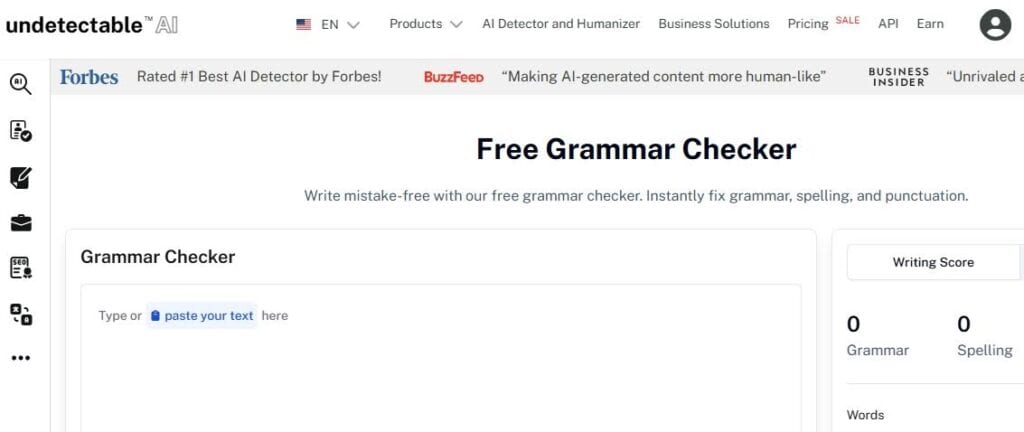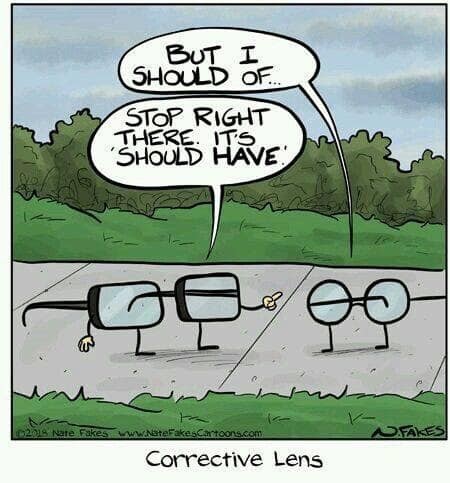Abrish spent 12 minutes writing just one text to her boss.
“Can I leave at 3 PM tomorrow?”
She paused. Maybe that was too casual.
“Should I leave at 3 PM tomorrow?”
That didn’t even make sense.
“Could I possibly leave at 3 PM tomorrow?”
Too desperate.
By the time she finally sent: “Would it be possible to leave at 3 PM tomorrow?”, her lunch break was over.
Okay, this story is made up.
But did you notice those highlighted words?
They’re called modal verbs.
Also Read: The Eight Parts of Speech
What are modal verbs? Modal verbs are like the “mood buttons” of English: press one, and your sentence instantly sounds more certain, polite, possible, or necessary.

In this blog, we’ll cover everything about modal verbs. What are modal verbs, their complete list, along with function and meaning.
You’ll also learn the usage of modal verbs in different contexts, common errors along with modal verb examples.
Let’s dive in.
Key Takeaways
- What are modal verbs? They’re helper words that follow one simple pattern: Modal + Base Verb (no “to”). Example: I can swim.
- Modal verbs never change form. They don’t add -s, -ed, or -ing ever (unlike German modal verbs which conjugate).
- Context determines meaning in modal verbs examples. The same modal can express different ideas such as, “Can I leave?” (permission) vs “I can swim” (ability) vs “It can rain” (possibility).
- There’s one modal per sentence. You can’t stack two or more modal verbs.
- Formality levels matter in modal verbs examples. Like “Can I help you?” sounds casual while “May I assist you?” sounds formal.
What Is a Modal Verb in Grammar?
What are modal verbs? Modal verbs are the helper words that tell you how something happens.
While regular verbs tell you what happens (“I swim”), modal verbs add the context. Whether you’re able to do it, need to do it, or might do it.
Modal verbs express five key ideas: possibility, necessity, permission, ability, or obligation.


Never Worry About AI Detecting Your Texts Again. Undetectable AI Can Help You:
- Make your AI assisted writing appear human-like.
- Bypass all major AI detection tools with just one click.
- Use AI safely and confidently in school and work.
They’re called “modal” because they show the manner or mode of the action.
Here’s the simple pattern you’ll see every time:
Modal + Base Verb (no “to”)
Look at these modal verb examples:
- I can swim (shows ability)
- I want to swim (regular verb, needs “to”)
See the difference? The modal “can” goes straight to the base verb “swim,” while “want” needs “to” before “swim.”
Characteristics of Modal Verbs
Here are the six characteristics of modal verbs:
- They Never Change Form
Regular verbs change based on who’s doing the action:
- I walk / He walks
- I jumped / He jumped
But modals stay the same no matter what:
- I can / He can (not “He cans”)
- You should / She should (not “She shoulds”)
Note: Unlike German modal verbs (können, müssen, sollen) which conjugate for different persons, English modal verbs maintain the same form across all subjects.
- They Don’t Have All the Usual Verb Forms
Try to use “can” in these sentences:
- I enjoy _____ help people (You can’t say “canning”)
- _____ is important (You can’t say “To can”)
Regular verbs have infinitive forms (to walk), gerunds (walking), and past participles (walked). Modals don’t have these forms. They’re called “defective verbs.”
- They Go Straight to the Base Verb
This rule never breaks:
- Correct: I should go
- Incorrect: I should to go
The moment you add “to” after a modal, you’ve made an error. This makes modals different from other helper verbs like “want” or “need” that require “to.”
- You Can Only Use One at a Time
English doesn’t let you stack modals:
- Incorrect: I will can go
- Correct: I will be able to go
When you need to combine meanings, you’ll need to use alternatives. This is where semi-modals like “be able to” come in handy.
If you’re unsure whether you’ve applied these rules correctly, enter your own sentences into the Ask AI tool and ask it to explain the modal verb in context.

This way, you’ll see exactly where you’re right, and where you might need to adjust.
Complete List of Modal Verbs
Modal verbs come in two main groups: primary modals and semi-modals.
- Primary Modals:
These are the “pure” modals. They follow all the modal rules: no “-s” endings, no infinitive forms, and they’re always followed by a base verb.
The core nine are:
can, could, may, might, will, would, shall, should, must
Here are the detailed modal verb examples with meanings:
- Can – shows ability or permission.
I can swim 2 miles without stopping. / You can borrow my book. - Could – past ability or polite possibility.
She could sing beautifully when she was younger. / We could try a different route. - May – permission or formal possibility.
You may leave early. / It may rain later. - Might – possibility, often less certain than “may.”
I might visit this weekend. - Will – definite future intention or promise.
I will call you tomorrow. - Would – hypothetical situations or polite offers.
I would travel more if I had the time. / Would you like some tea? - Shall – formal suggestion or future (mainly British English).
Shall we go for a walk? - Should – advice or expected outcome.
You should eat more vegetables. / The train should arrive soon. - Must – strong necessity or logical conclusion.
You must wear a helmet. / That must be her car outside.
Also Read: Auxiliary Verbs: Definition & Examples
- Semi-Modals / Modal-like Verbs:
These act like modal verbs in meaning, but they don’t follow all the same grammar rules.
Examples: ought to, used to, need to, have to, be able to, be going to
Why they’re “semi”:
- They sometimes take “to” before the main verb (ought to go, need to finish).
- Many can change with tense, unlike pure modals.
Key difference in action:
- Have to change the tense: I had to go (past), I will have to go (future).
- Be able to adapt for different tenses: I am able to help, I was able to help.
- Be going to express a planned future: We are going to visit Rome next month.
Functions and Meanings of Modal Verbs
Modal verbs handle five main jobs in English:
| Function | Modal Verbs | Examples |
| Ability | can, could | I can play the guitar. (present ability)She could run five miles when she was younger. (past ability) |
| Possibility | might, could | We might see a shooting star tonight.This could take longer than expected. |
| Necessity / Obligation | must, have to | You must wear safety goggles in the lab. (strong necessity)I have to finish this report by noon. (external requirement) |
| Permission | may, can | May I open the window? (formal request)You can take photos here. (permission) |
| Advice / Recommendation | should, ought to | You should get your car serviced.You ought to speak to a specialist. |
But one modal can wear multiple hats. Look at these modal verbs examples with “can”:
- Can I leave? (asking permission)
- I can swim (showing ability)
- It can get cold here (expressing possibility)
Same word, completely different meanings.
Unlike German modal verbs where können primarily means “can/to be able to,” English modal verbs are more context-dependent.
Also, some modals show how sure you are about something. Think of it as a confidence meter:
- Must = 95% certain (“He must be home—his car is there”)
- Should = 80% certain (“She should be here soon”)
- Might/Could = 30-50% certain (“It might snow tomorrow”)
This certainty scale helps you pick the right modal for how confident you feel.
How to Use Modal Verbs in Sentences
Modal verbs have a simple but fixed sentence structure.
Once you know the formula, you can use them in affirmative, negative, and question forms without confusion.
- Sentence Structure with Modal Verbs
| Form | Structure/Formula | Example | Breakdown |
| Affirmative | Subject + Modal + Base Verb (+ Object) | She can swim | Subject = She, Modal = can, Base Verb = swim |
| Negative | Subject + Modal + not + Base Verb | I cannot agree with that. | Subject = I, Modal = cannot, Base Verb = agree, Object = with that |
| Question (Yes/No) | Modal + Subject + Base Verb | Can you swim? | Modal = Can, Subject = you, Base Verb = swim |
| Question (WH-) | WH-word + Modal + Subject + Base Verb | Where should we park? | WH-word = Where, Modal = should, Subject = we, Base Verb = park |
Also Read: Sentence Structure: Learn the Rules for Every Sentence Type
- Questions and Negatives with Modals
When forming questions with modal verbs, the modal moves to the front of the sentence.
For example,
- You can swim → Can you swim?.
- She should call you → Should she call you?
Negative sentences with modals are formed by placing not (or its contraction) immediately after the modal: cannot, can’t, should not, shouldn’t, must not, mustn’t.
One critical rule: never use do, does, or did with modals.
Incorrect: Do you can swim?
Incorrect:He doesn’t must go.
Instead, keep the modal in place:
Correct: Can you swim?
Correct: He mustn’t go.
To avoid mistakes with placement and form, use a Grammar Checker to quickly verify your modal verb usage and spot incorrect structures before finalizing your writing.

Some contractions carry specific nuances. Mustn’t means something is prohibited, while don’t have to means there is no obligation (but it’s allowed).
Examples:
- Yes/No Question: Can we start now?
- WH-Question: Why should I trust him?
- Negative Statement: She can’t attend the meeting.
- Negative WH-Question: Why shouldn’t we try a new approach?
Modal Verbs and Tense
Modal verbs change form depending on the time reference (present, past, future), but they never take endings like -ed, -ing, or -s.
- Present vs Past Modals
- Can (present) → could (past)
- Will (present) → would (past or hypothetical)
- Shall (present) → should (past-like or advisory)
- Past Situations
To talk about the past, use Modal + have + Past Participle:
- She could have won the race. (possibility that didn’t happen)
- You should have told me earlier. (missed obligation)
- Future Reference
Some modals can express future meaning:
- I will call you tomorrow. (certainty)
- You may need a visa for that trip. (future possibility)
Note: German modal verbs work similarly for time reference, but English modal verbs have unique past perfect constructions that don’t exist in German.
- Timeline Examples
| Time | Example | Meaning |
| Present | I can swim. | ability now |
| Past | I could swim when I was a child. | past ability |
| Future | I will help you later. | future intention |
| Past perfect form | I could have helped you if I’d known. | unrealized past possibility |
Common Errors with Modal Verbs
Here are the five common errors with modal verbs:

Error #1: Using two modals together
A clause can only contain one modal verb.
Incorrect: I will can go.
Correct: I will go. / I can go.
Error #2: Adding “-s” to modal verbs
Modal verbs never change form for he/she/it.
Incorrect: He cans swim.
Correct: He can swim.
Memory trick: Modals never take -s, even with he/she/it.
Error #3: Placing “to” after a modal
Modals are followed directly by the base verb, without “to.”
Incorrect: I must to go.
Correct: I must go.
Memory trick: Modals are followed directly by the base verb (no “to”).
Error #4: Using incorrect past forms of modals
Some modals don’t have past forms; use substitutes instead.
Incorrect: I musted finish the report.
Correct: I had to finish the report.
Memory trick: If the modal sounds odd in past tense, it probably needs a different verb.
Error #5: Using “do/does/did” with modals in questions
Questions with modals are formed by moving the modal before the subject.
Incorrect: Do you can swim?
Correct: Can you swim?
Memory trick: Let the modal lead the question — no extra “do/does/did.”
Ensure your content sounds human and reads naturally—explore the widget below.
FAQs About Modal Verbs
Can Modal Verbs Be Used in the Past Tense?
Some modals have past forms (can → could). Others use modal + have + past participle (should have gone).
What’s the Difference Between “Must” and “Have to”?
Must is stronger and formal. Have to is casual. Must mean your own decision/obligation. Have to mean rule or necessity from outside.
Are “Need to” and “Have to” Modals?
No. They’re semi-modals and change with tense. Example: I needed to study last night. / I had to leave early.
How Do You Teach Modals to ESL Students?
Use real-life examples, visuals, and role-plays. Explain meaning first, then grammar. Example activity: Students role-play asking for permission (Can I borrow your book?).
Final Thoughts
So, the next time you need to ask for permission, make a polite suggestion, or talk about possibility, which modal verb will you choose?
Will you go for the confident must, the flexible could, or the gentle might?
The truth is, learning what is modal verb is more about understanding how these words shape tone, intention, and clarity.
They decide whether your sentence sounds like a command, a request, or an open-ended thought.
If a single word can change the meaning and impact of your sentence, it’s worth studying modal verb examples to see how the right choice can make all the difference.
With Undetectable AI’s Ask AI and Grammar Checker, you can explore modal verbs in depth, ensuring every choice is intentional and precise.
Level up your writing with Undetectable AI—start mastering modal verbs today.
